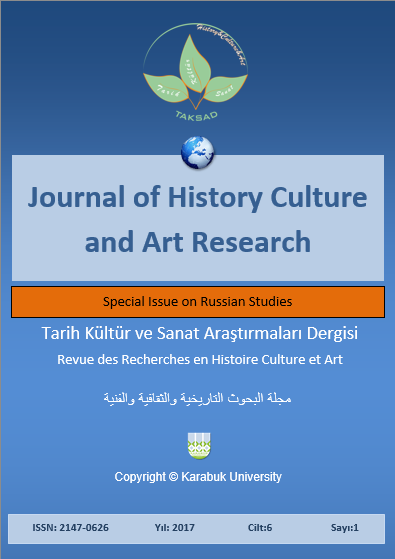Expressive Means in Tatar Translation of Alexander Sergeevich Pushkin’s Novel "Eugene Onegin"
DOI:
https://doi.org/10.7596/taksad.v6i5.1307Keywords:
Pushkin's poetry, Pushkin's prose, Poetic text, Artistic translation, Lexical means of expressiveness.Abstract
The comparative study of the Tatar translation of the novel in verses "Eugene Onegin" by Alexander Sergeevich Pushkin and the original is performed in this scientific article in order to determine its artistic quality in the aspect of the lexical expressive means transfer of the original. The following methods and techniques were used in the work: comparative and hermeneutic method, etc. The study is based on the translation of Pushkin's novel, which was performed in the early 1950s, by Tatar poets Ahmet Iskhak, Ahmed Faizi and Shaykhi Mannur. In 1930s the novel was already magnificently translated by Fathi Burnash, but soon it was declared an "enemy of the people", and thus the regional committee of the party created a brigade of the best poets and ordered the translation to be published urgently. Based on the analysis of the novel in verse "Eugene Onegin" from the point of view of the lexical pictorial means of language use, we have discovered that Pushkin's language is full of rich imagery and a high degree of metaphorization and epithets. One of the most frequently used lexical stylistic devices in the novel in verse is metaphor and epithet. The author uses both simple and expanded metaphors. The latter can cover whole sentences or several sentences, forming the chain of metaphors for general semantics.
References
Abdrakhmanova, A. A.; Galiullina, G. R. & Khadieva, G. K. (2016). The national mindset verbalization through the Tatar pragmatonims. Journal of Language and Literature, 7(1), 190-193.
Islamova, E. A.; Safonova, S. S. & Bolgarova, R. M. (2014). Written Records of the Kazan Region of the XVI century: Historical, lexicological and lexicographical aspects. Journal of Language and Literature, 5(4), 321-324.
Pushkin, A. S. (1954). Saylanma äsärlär. 2 tomda: şiğerlär, poemalar, “Yevgeniy Onegin” romanı, äkiätlär, drama äsärläre. V. 1. Kazan: Tat book publishing house.
Pushkin, A. S. (2002). Eugene Onegin. Moscow: Veche.
Safina, G. F. (2014). Lyrics by A.S. Pushkin in the translations into Tatar language: history and poetics. Dissertation of Philology. Kazan.
Sibgaeva, F. R. & Salakhova, R. R. (2014). Space in a world view of poetic phraseology of the Tatar language. Journal of Language and Literature, 5(3), 271-274.
Sibgaeva, F. R.; Salakhova, R. R. & Nikolaevna, K. Z. (2016). Problems of affixal homonymy in the Tatar language. Modern Journal of Language Teaching Methods, December Special Issue, 120-124.
Yuisufuva, Z.; Yusupova, А. S.; Mugtasimova, G. R. & Denmukhametova, E. N. (2016). Paroemiological units of the Tatar language with culture-specific. Modern Journal of Language Teaching Methods, December Special Issue, 161-165.
Yusupov, R. A. (1980). Lexical and phraseological means of Russian and Tatar languages. Kazan: Tatar book publishing house.
Yusupov, R. A. (2005). The ratio of different languages and translation issues. Kazan: Tatar book publishing house.
Downloads
Published
How to Cite
Issue
Section
License
All papers licensed under Creative Commons 4.0 CC-BY.- Share — copy and redistribute the material in any medium or format
- Adapt — remix, transform, and build upon the material for any purpose, even commercially.
Under the following terms:
Attribution — You must give appropriate credit, provide a link to the license, and indicate if changes were made. You may do so in any reasonable manner, but not in any way that suggests the licensor endorses you or your use.
- No additional restrictions — You may not apply legal terms or technological measures that legally restrict others from doing anything the license permits.







